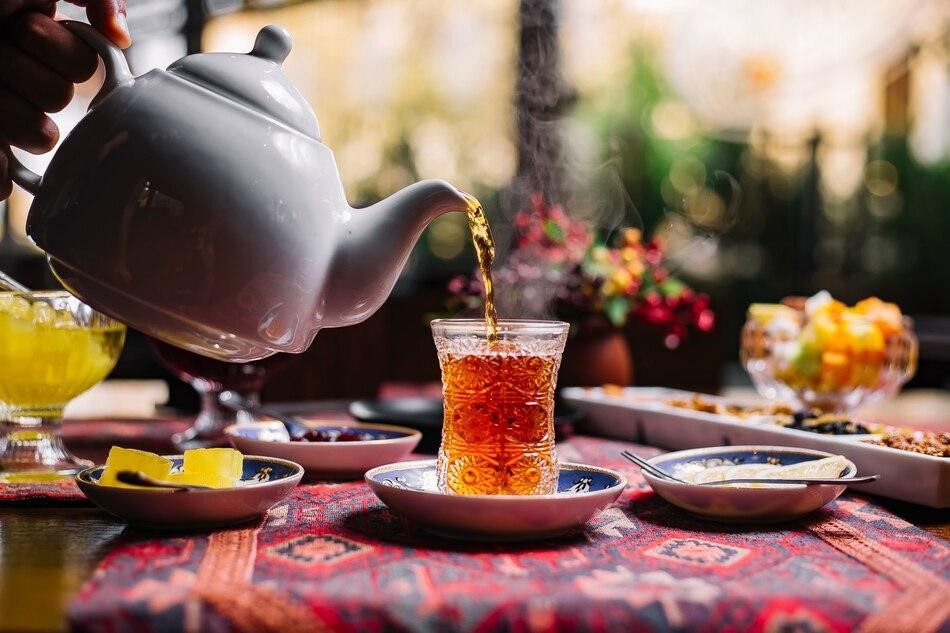Cultural Tea Traditions: A Journey Across The Globe
Tea is a tradition that people worldwide love and respect crossing borders and cultures. Tea is made and drunk in a way that is specific to each culture and is based on its history and values. There are many different kinds of tea ceremonies around the world. In Japan there is a peaceful tea ceremony and in Argentina people share mates in a lively way. Come with us as we learn about ten fascinating tea traditions worldwide.
Japanese Tea Ceremony
The tea ceremony in Japan also called chanoyu or sado is a religious practice that goes back hundreds of years. Harmony, respect and peace are essential to this spiritual and cultural experience. Every part of making and serving matcha tea in the tea ceremony is carefully planned from how the tea tools are set up to how the tea is whisked.
Each movement has a deeper meaning and stands for simplicity, humility and mindfulness. The tea ceremony is moreover than just drinking tea. It is a way of life that encourages people to be mindful and enjoy the present moment. People who make and drink tea find inner peace and harmony with the world around them.
Chinese Tea Ceremony
The gongfu cha or Chinese tea ceremony is an old custom passed down from generation to generation. Rituals are significant in making tea because they emphasize making tea and appreciating its smell, taste and appearance. In addition to a bamboo tea tray gingko tea is served in small clay teapots and cups.
The ceremony usually starts with the teaware being rinsed to remove dirt. Then the tea is steeped more than once bringing out new flavors and levels of complexity each time. Gongfu cha is more than just drinking tea, it is a way to connect with yourself nature and culture. When people take the time to make and enjoy tea in this way they grow to appreciate the beauty and complexity of the world around them more.
English Afternoon Tea
Afternoon tea in England is a beloved tradition dating back to the 1800s. It is a light meal usually served in the late afternoon. It includes pastries, tea finger sandwiches, clotted cream and jam scones. What you do at afternoon tea is as important as what you eat and drink. It is time to unwind, hang out with friends and enjoy life’s pleasures.
The tradition of afternoon tea comes from the upper class people in Britain who used to enjoy it as a private time to get together. Today people from all walks of life enjoy afternoon tea which is popular in England and around the world. Afternoon tea is a lovely tradition that celebrates the simple pleasures of life. It can be enjoyed in a cozy tea room or at home with friends.
Moroccan Mint Tea
Mint tea from Morocco, also called atay banana is a beloved tradition in the country. It is made with green tea, fresh mint leaves, sugar and boiling water. It is incredible and energizing. The tea is served in a teapot which is usually brass or silver and has many exciting designs.
People love Moroccan mint tea because it tastes strong, sweet and minty and is bright green. It is usually served in small glasses and poured from a high place to make it foamy. Moroccan mint tea is moreover than just a drink, it is a sign of friendship and openness. It is frequently served to guests as a sign of respect and welcome and you can see it at many parties and social events.
Russian Tea Tradition
Tradition and friendliness are critical in Russian tea culture. A big part of Russian social events and family celebrations is tea. Russian tea is usually served in a glass with a metal holder called a podstakannik. It is solid and black. Tea is enjoyed all day long and is traditionally served with jam honey and sweets. A traditional Russian tea urn called a samovar is essential to Russian tea culture because it holds hot water for making tea.
Making and serving tea is an important tradition in Russia and each family has its own special way of doing it. Tea is a sign of warmth and friendliness and it is common for family and friends to get together and drink a pot of tea. A warm cup of tea is a beloved part of Russian life whether it is a cold winter day or a holiday party.
Indian Chai Tea
Chai tea, also called masala chai, is an Indian spiced tea drink. It combines spices like cardamom cinnamon ginger and cloves with black tea milk sugar and other ingredients. Chai is a common drink in Indian homes and it is often served to guests as a way to say hello. People like it because it has rich warming flavors and brings people together.
In traditional recipes chai tea is made in a chai kettle pot and slowly simmered on the stove until it smells good and tastes good. It is then strained and served in small cups often with sweets or snacks. In India chai tea is more than just a drink. It is a sign of friendship and hospitality and people of all ages and backgrounds enjoy it.
Taiwanese Bubble Tea
Bubble tea boba tea is a tea based beverage from Taiwan that has become popular worldwide. Its base is sweetened tea which is often mixed with milk. It is served with other things on top like chewy tapioca pearls. Bubble tea is known for being fun and silly and the tapioca pearls that make it famous give it a unique texture.
Many people of all ages enjoy bubble tea and consider it part of Taiwanese culture. Different kinds of bubble tea come in various flavors like milk, fruit and even savory. Since it is usually served cold it is a nice treat on a hot day. Bubble tea has been modified a lot over the years but the main ingredients that make it what it is today, a sweet and flavorful tea base served with chewy tapioca pearls, have stayed the same.
Turkish Tea Culture
Turkish tea also known as cay is a traditional strong black tea that is very important to the Turkish people. People drink it all day and usually get it in small glasses shaped like tulips. The way Turkish tea is brewed gives it a deep red color and a wealthy flavor. A caydanlik, a unique pot with two levels, is used to make the tea. The strong tea and hot water go in the top and bottom levels.
After the tea is brewed it is poured into the glass and hot water is added until the strength is right. Sugar cubes are often served with Turkish tea so that each person can make their tea as sweet as they like. People in Turkey are amiable and it is common for friends and family to get together and share a pot of tea. Turkish people’s friendly and helpful nature can be seen in their tea culture. The Turks are very proud of their tea traditions.
Conclusion
Tea is more than just a drink, it is a part of Chinese culture passed down from generation to generation. Every tea custom in the world reflects the country’s traditional beliefs and ways of life. The Japanese tea ceremony is full of complicated customs and Turkish tea culture is known for its warm hospitality. Tea can bring people together and create moments of joy and connection. The next time you drink tea consider the long history and cultural meaning of this popular drink.


